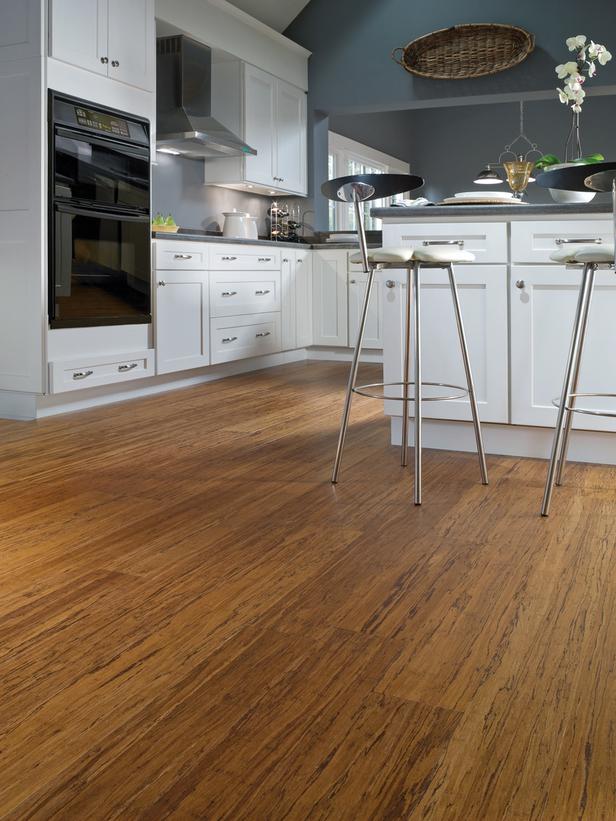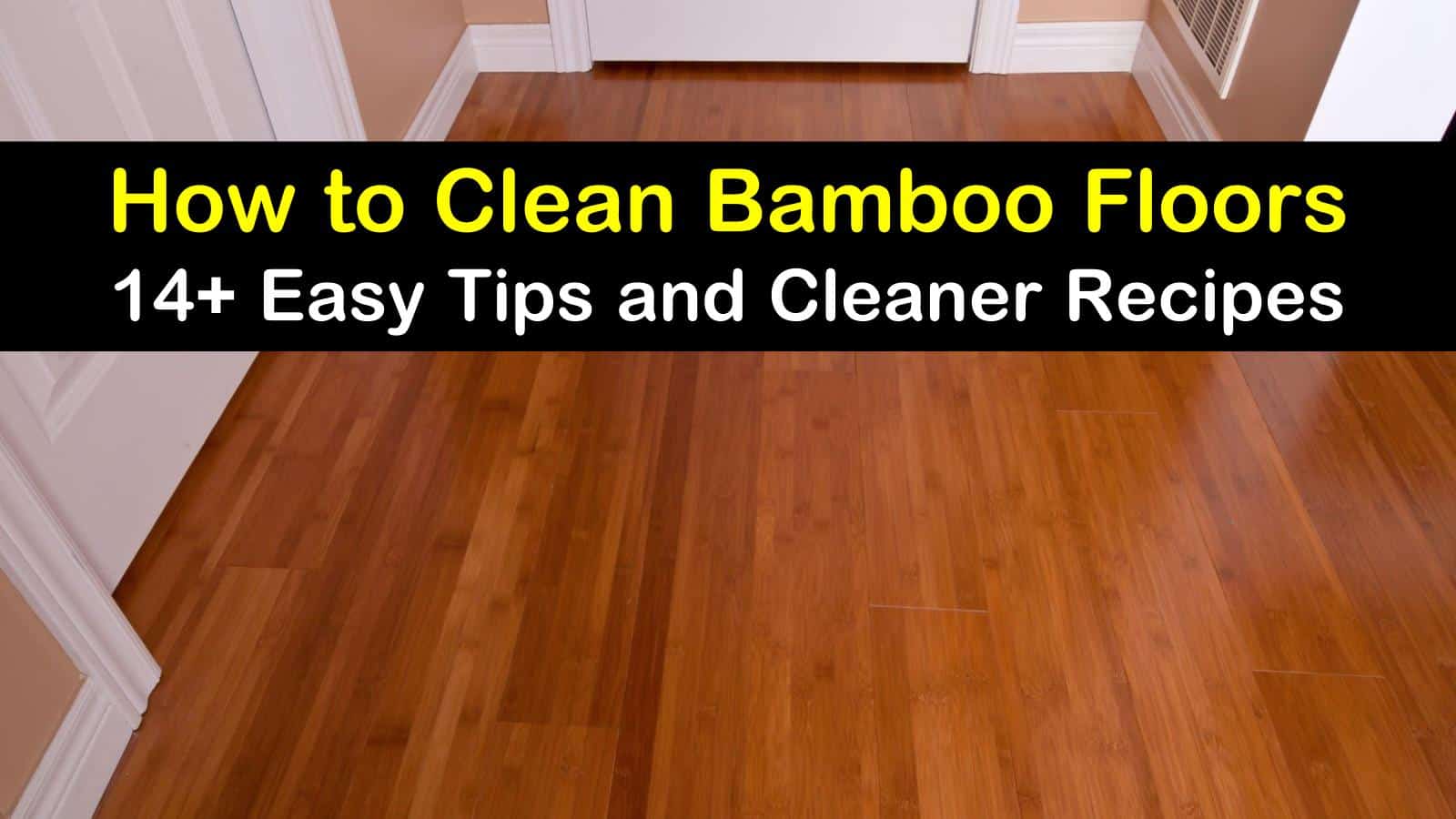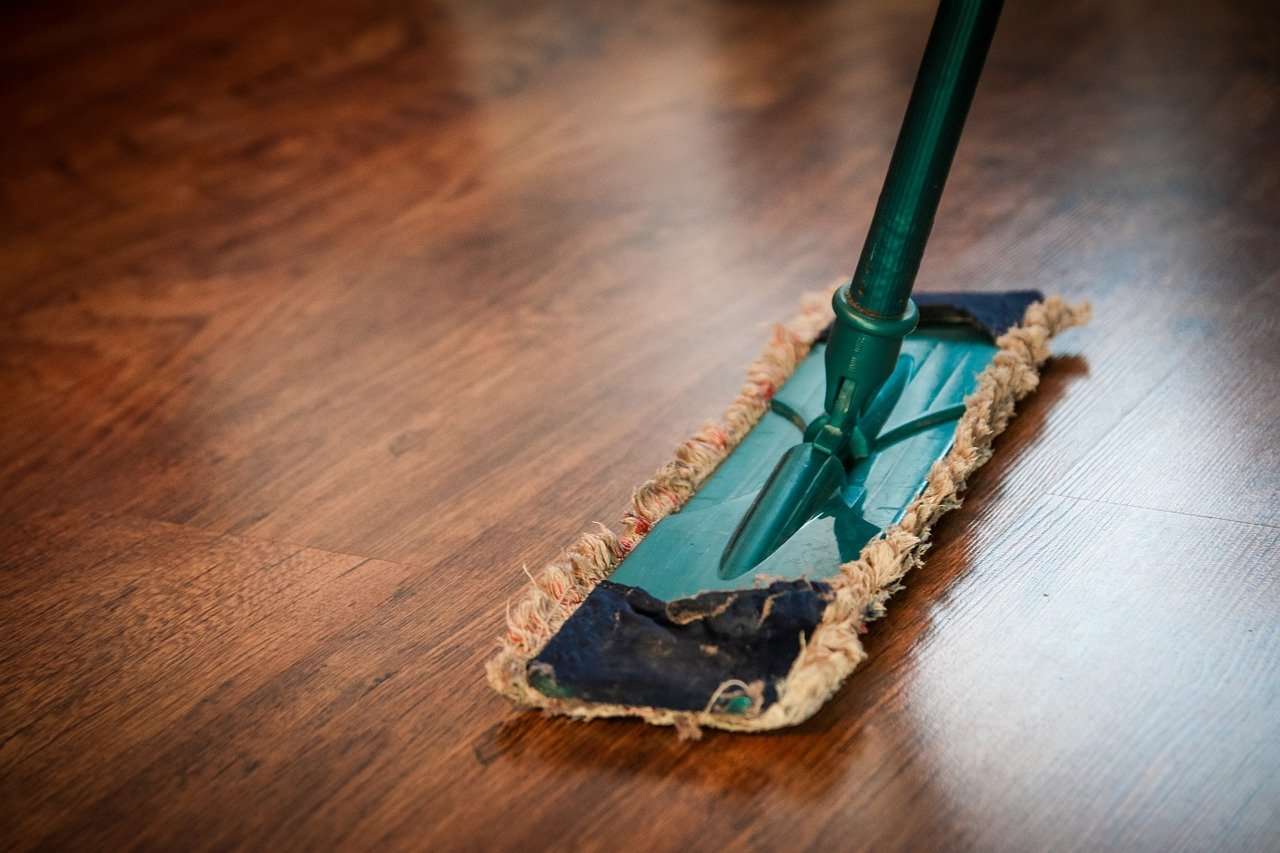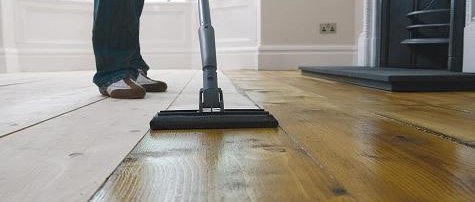Bamboo Flooring: Benefits and Characteristics
Bamboo flooring has become a popular choice for homeowners seeking an eco-friendly and stylish alternative to traditional hardwood. Its unique characteristics and numerous benefits make it an attractive option for various living spaces. Here are some benefits and characteristics of bamboo flooring:
- Sustainability: Bamboo is a highly sustainable resource. Unlike hardwood trees, which can take decades to mature, bamboo can be harvested in as little as three to five years. This rapid growth rate makes bamboo an environmentally friendly choice for flooring, as it can be replenished quickly and reduces deforestation.
- Durability: Bamboo flooring is known for its impressive durability. Strand-woven bamboo, in particular, is one of the hardest flooring materials available, often surpassing traditional hardwoods in strength. This durability makes bamboo flooring ideal for high-traffic areas in homes, such as living rooms, kitchens, and hallways.
- Aesthetic Appeal: Bamboo flooring offers a unique and natural aesthetic that can complement various interior design styles. Its distinctive grain patterns and warm hues can enhance the visual appeal of any room. Bamboo flooring is available in a range of colors, from natural light tones to darker, more exotic finishes.
- Easy Installation: Many bamboo flooring options come with a click-lock or tongue-and-groove system, making installation relatively straightforward. This ease of installation can save homeowners time and money, especially if they opt for a DIY approach. Additionally, bamboo flooring can be installed over various subfloor types, including concrete and plywood.
- Allergy-Friendly: Bamboo flooring is a great choice for allergy sufferers. Unlike carpets, bamboo does not trap dust, pollen, and other allergens, making it easier to maintain a clean and healthy indoor environment. Regular cleaning can help reduce allergens and improve air quality in the home.
- Affordability: Compared to some hardwood options, bamboo flooring is often more affordable. This cost-effectiveness makes it an attractive choice for homeowners looking to achieve the look and feel of hardwood without the high price tag. Bamboo flooring offers excellent value for money, considering its durability and aesthetic appeal.

Daily Care Tips for Bamboo Floors
Maintaining the beauty and longevity of bamboo floors requires consistent daily care. Proper daily maintenance can help prevent damage and keep your floors looking their best. Here are some essential daily care tips for bamboo floors:
Sweeping and Dusting: Regular sweeping or dusting is crucial to keep bamboo floors free of dirt and debris. Use a soft-bristle broom or a microfiber dust mop to gently remove particles that can cause scratches. Aim to sweep or dust your floors at least once a day, especially in high-traffic areas.
Avoiding Excess Moisture: Bamboo floors are susceptible to water damage, so it’s important to avoid excess moisture. Wipe up spills immediately with a dry or slightly damp cloth to prevent water from seeping into the seams. Avoid using wet mops or steam cleaners, as they can damage the finish and cause the bamboo to swell.
Using Mats and Rugs: Placing mats and rugs in high-traffic areas can help protect bamboo floors from wear and tear. Use rugs at entryways to trap dirt and moisture before it reaches the floor. Opt for rugs with non-slip backings to prevent movement and potential scratching of the floor’s surface.
Furniture Pads: Protect your bamboo floors from scratches by placing felt pads or furniture coasters under the legs of chairs, tables, and other furniture. These pads reduce the risk of damage when moving furniture and distribute weight more evenly, preventing dents and scratches.
Shoe Policy: Implement a no-shoes policy indoors to minimize dirt and grit on your bamboo floors. High heels and shoes with hard soles can cause scratches and dents. Encourage family members and guests to remove their shoes at the door and provide a designated area for shoe storage.
Regular Inspections: Conduct regular inspections of your bamboo floors to identify any potential issues early. Look for signs of wear, scratches, or damage and address them promptly. Early intervention can prevent minor problems from escalating into more significant issues that require extensive repairs.
Cleaning Bamboo Floors: Best Practices and Products
Proper cleaning is essential for maintaining the appearance and longevity of bamboo floors. Using the right techniques and products can prevent damage and keep your floors looking pristine. Here are some best practices and recommended products for cleaning bamboo floors:
Sweep and Dust Regularly: Daily sweeping or dusting is the first step in maintaining clean bamboo floors. Use a soft-bristle broom or a microfiber dust mop to remove dirt, dust, and debris. This routine prevents particles from scratching the surface and keeps your floors looking fresh.
Vacuum with Care: If you prefer vacuuming, use a vacuum cleaner designed for hard floors. Ensure it has a soft brush attachment or a setting that prevents the beater bar from engaging, as this can scratch the bamboo. Vacuuming helps remove dirt and dust from hard-to-reach areas and between floorboards.
Use a Damp Mop: For deeper cleaning, use a damp mop with a microfiber pad. Ensure the mop is only slightly damp, not wet, to avoid excess moisture on the floor. Mop in the direction of the bamboo grain to prevent streaks and achieve a more thorough clean.
Choose the Right Cleaner: Select a pH-neutral cleaner specifically formulated for bamboo or hardwood floors. Avoid harsh chemicals, abrasive cleaners, and oil-based soaps, as these can damage the finish. Follow the manufacturer’s instructions for the cleaner and test it on a small, inconspicuous area before applying it to the entire floor.
Spot Clean Spills: Address spills immediately to prevent staining and water damage. Use a dry or slightly damp cloth to blot and clean the spill. For stubborn stains, use a gentle cleaner and a soft cloth, ensuring you don’t scrub too hard to avoid damaging the finish.
Avoid Steam Cleaners: Steam cleaners can cause significant damage to bamboo floors by forcing moisture into the seams and causing the bamboo to swell and warp. Stick to traditional cleaning methods with a damp mop and appropriate cleaners to maintain the integrity of your floors.
Preventing Damage: Dos and Don’ts for Bamboo Flooring
Bamboo flooring is durable, but it can still be susceptible to damage if not properly cared for. Following certain dos and don’ts can help prevent damage and extend the life of your bamboo floors. Here are some essential guidelines to keep in mind:
Do Use Furniture Pads: Place felt pads or coasters under the legs of all furniture to prevent scratches and dents. These pads help distribute weight more evenly and allow furniture to be moved without damaging the floor. Regularly check and replace worn-out pads to ensure continued protection.
Don’t Drag Furniture: Avoid dragging heavy furniture or objects across bamboo floors, as this can cause scratches and gouges. Instead, lift and carry items or use moving aids like furniture sliders. This practice helps maintain the smooth surface of your bamboo flooring.
Do Maintain Proper Humidity Levels: Bamboo floors can be sensitive to changes in humidity. Maintain indoor humidity levels between 40% and 60% to prevent the bamboo from shrinking or swelling. Use a humidifier or dehumidifier as needed to achieve the ideal humidity level and prevent warping or gaps.
Don’t Use Harsh Chemicals: Avoid using harsh chemicals, abrasive cleaners, and oil-based soaps on bamboo floors. These products can damage the finish and leave residues that attract dirt. Stick to pH-neutral cleaners specifically designed for bamboo or hardwood floors to ensure safe and effective cleaning.
Do Protect from Sunlight: Prolonged exposure to direct sunlight can cause bamboo floors to fade and discolor. Use curtains, blinds, or UV-protective window film to limit sunlight exposure. Rearrange furniture and rugs periodically to ensure even fading and maintain the floor’s appearance.
Don’t Ignore Spills and Stains: Address spills and stains promptly to prevent damage. Wipe up spills immediately with a dry or slightly damp cloth to prevent moisture from seeping into the seams. For stains, use a gentle cleaner and avoid scrubbing too hard to protect the finish.
Handling Spills and Stains on Bamboo Floors
Spills and stains are inevitable, but knowing how to handle them properly can prevent damage to your bamboo floors. Prompt and effective action is key to maintaining the beauty and integrity of your flooring. Here are some tips for handling spills and stains on bamboo floors:
Immediate Cleanup: When a spill occurs, clean it up immediately to prevent moisture from seeping into the seams and causing damage. Use a dry or slightly damp cloth to blot the spill. Avoid using a wet cloth or letting the spill sit for an extended period.
Gentle Cleaning Solutions: For most spills, a damp cloth with water is sufficient. For tougher stains, use a pH-neutral cleaner specifically formulated for bamboo or hardwood floors. Avoid harsh chemicals and abrasive cleaners that can damage the finish. Apply the cleaner to the cloth, not directly to the floor, to control the amount of moisture used.
Dealing with Stains: For common stains like food or drink, gently clean the area with a damp cloth and a mild cleaner. For more stubborn stains, you may need to use a slightly stronger solution. Test any cleaner on a small, inconspicuous area first to ensure it does not damage the finish.
Oil and Grease Stains: Oil and grease stains can be challenging to remove. Use a small amount of mild dish soap mixed with water to clean the stain. Apply the solution to a cloth and gently blot the stain until it lifts. Rinse the area with a clean, damp cloth to remove any soap residue.
Preventive Measures: Use rugs or mats in areas prone to spills, such as near sinks and dining areas, to protect your bamboo floors. Choose mats with non-slip backings to prevent them from moving and potentially causing scratches. Regularly clean and replace these mats to keep them effective.
Professional Help: For persistent or severe stains that do not respond to regular cleaning methods, consider seeking professional help. A flooring specialist can assess the damage and recommend appropriate treatments or repairs to restore your bamboo floors to their original condition.
Long-Term Maintenance: Preserving the Beauty of Bamboo Flooring
Long-term maintenance is crucial for preserving the beauty and functionality of bamboo flooring. Consistent care and attention can help extend the life of your floors and keep them looking their best. Here are some tips for long-term maintenance of bamboo flooring:
Regular Cleaning: Maintain a regular cleaning routine to keep your bamboo floors free of dirt and debris. Sweep or dust daily with a soft-bristle broom or microfiber dust mop. Regular cleaning prevents scratches and maintains the floor’s shine. Vacuum occasionally with a hard floor attachment to reach crevices and remove deeper dirt.
Periodic Deep Cleaning: In addition to daily cleaning, perform a deep clean every few months. Use a damp mop with a pH-neutral cleaner specifically designed for bamboo or hardwood floors. Ensure the mop is only slightly damp to avoid excess moisture. Mop in the direction of the bamboo grain for a thorough clean.
Refinishing: Over time, bamboo floors may show signs of wear, such as scratches or dullness. Refinishing can restore the floor’s appearance and protect the bamboo from further damage. Depending on the wear and tear, refinishing might involve sanding down the surface and applying a new coat of finish. Consult a professional to determine the best approach for your floors.
Maintaining Humidity Levels: Bamboo floors can be sensitive to changes in humidity. Maintain indoor humidity levels between 40% and 60% to prevent the bamboo from shrinking or swelling. Use a humidifier or dehumidifier as needed to achieve the ideal humidity level. Consistent humidity helps preserve the structural integrity of your floors.
Protecting High-Traffic Areas: Use rugs and mats in high-traffic areas to reduce wear and tear on your bamboo floors. Place mats at entryways to trap dirt and moisture before it reaches the floor. Regularly clean and replace these mats to keep them effective and prevent scratches from trapped debris.
Addressing Wear and Tear: Regularly inspect your bamboo floors for signs of wear and tear. Address minor issues promptly to prevent them from becoming major problems. Replace damaged boards or sections as needed. Periodically reapply finish to high-wear areas to maintain protection and appearance.
How To Clean Bamboo Floors: Cleaning And Maintenance
Easy Ways to Make Bamboo Floors Shine
Related Posts:






